LATEST NEWS


(Randy Shaw is the editor of BeyondChron and author of The Activist’s Handbook, Second Edition. This post first appeared November 14 on BeyondChron and is republished with permission.)
Last week’s Twitter IPO triggered stories about “tech culture’s” impact on San Francisco and the broader society. It made me ask: is there really a culture of tech outside the workplace and, if so, what is it? More importantly, does labeling popular activities among young workers as “tech culture” create divisions among people who otherwise could be working together to solve social problems? Many (including myself) have identified the term with a libertarian political philosophy, hostility to unions and overwhelming white and Asian-American workers under-40 without kids. It is also identified with the rise of artisan coffees and foods, wine bars, upscale restaurants and the now legendary $4 toast that led the Courage Campaign to launch a petition to Mayor Lee regarding the city’s rising costs.


Author and documentary film co-producer (Wal-Mart: The High Cost of Low Price, Iraq for Sale) Kerry Candaele’s newest work records the transformative power that Ludwig van Beethoven’s Ninth Symphony has had upon the lives of four people. These stories took him to a dozen countries on five continents, part of a journey of discovery about one of music’s greatest achievements. In Candaele’s new documentary, Following the Ninth: In the Footsteps of Beethoven’s Final Symphony, the Ninth’s “Ode to Joy” choral finale emerges as a soundtrack for social justice and world brotherhood.
In this film, which Bill Moyers calls “beautiful and powerful,” Candaele recounts the struggles of rebellious students like Feng Congde at Tiananmen Square, who played the “Ode to Joy” over loudspeakers as they faced the tanks,
» Read more about: Interview With the Director of ‘Following the Ninth’ »
For generations, Americans have relied on public service workers to inspect the food we eat. In fact, one major concern of the recent government shutdown was that food inspectors would be furloughed, endangering or shutting down the food supply chain across the country.
American public institutions have a long track record of keeping our food disease-free. Yet as this service is increasingly outsourced to for-profit corporations, it is leading to repeated oversight failures that have caused illness and even death. And too often, the for-profit entities that are now responsible for keeping our food safe have conflicts of interest that encourage them to rubber-stamp inspections rather than ensure our food is safe.
The Department of Agriculture’s Food Safety Inspection Service (FSIS) has proposed a “Modernization of Poultry Inspection.” But “modernization” is just public relations babble for removing USDA inspectors from poultry lines and letting companies police themselves.
» Read more about: Removing USDA Poultry Inspectors: What Does the Fox Say? »
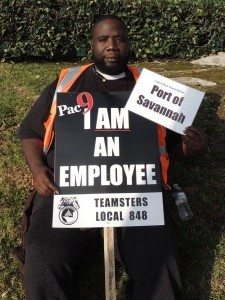
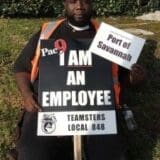
Twenty-seven port truck drivers walked into the Rancho Dominguez offices of Total Transportation Services, Inc. (TTSI) Thursday and presented their employer with a petition. Their demand was simple: to be properly recognized as employees. TTSI is one of the largest port trucking companies in the twin ports of Los Angeles and Long Beach. TTSI’s business model – like the vast majority of port trucking companies in the country – relies on misclassifying its drivers as independent contractors.
When companies like TTSI misclassify their employees, they not only deprive the public of much-needed revenue by avoiding taxes, they also deprive workers of hard-earned wages by deducting business expenses like lease payments and fuel from drivers’ paychecks.
As TTSI driver Jose Rosales states, “Some weeks we aren’t even breaking even. How can I build a future for my family this way?”
Rosales and his fellow TTSI drivers who delivered yesterday’s petition are also seeking recourse through the California Division of Labor Standards Enforcement (DLSE),
» Read more about: TTSI’s Port Drivers Demand to Be Treated as Employees »


On December 5, as part of its 20th anniversary celebration, the L.A. Alliance for a New Economy will honor OUR Walmart, an organization determined to transform conditions at the world’s largest retailer. Frying Pan News recently asked Walmart employee Martha Sellers, who has worked at the company’s Paramount store for 10 years, to reflect on her role in one of the most ambitious social justice efforts of our time.
Frying Pan News: If you could sit down for a one-on-one conversation with Walmart CEO Mike Duke, what would you say?
Martha Sellers: Explain to me why you cannot afford to pay us a living wage when it is proven you make mega bucks. Why?
You spend your money on all these things but your associates. Why?
You spend money on PR and opening more stores when the stores that are already open are not doing well.
» Read more about: Fear Is No Option: Walmart Associate Martha Sellers »


This morning L.A. Observed disclosed the death of its business editor and writer, Mark Lacter. LAO editor-in-chief Kevin Roderick reported that Lacter’s “wife, the author Laura Levine, told me that Mark suffered a stroke yesterday and could not survive the bleeding on his brain. He was 59 and died at Ronald Reagan UCLA Medical Center.”
A former Los Angeles Business Journal editor, Lacter was a regular commentator on radio station KPCC and also published in Los Angeles magazine. In 2005, he was named by the Society of Professional Journalists as Distinguished Journalist of the Year
Although Lacter would often infuriate Frying Pan News readers with his swipes at unions, he also railed against developers who were manipulating the government’s EB-5 visa program and, more notably, against the outlandish inequality between Los Angeles’ haves and have-nots.
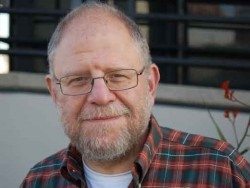

This morning L.A. Observed disclosed the death of its business editor and writer, Mark Lacter. LAO editor-in-chief Kevin Roderick reported that Lacter’s “wife, the author Laura Levine, told me that Mark suffered a stroke yesterday and could not survive the bleeding on his brain. He was 59 and died at Ronald Reagan UCLA Medical Center.”
A former Los Angeles Business Journal editor, Lacter was a regular commentator on radio station KPCC and also published in Los Angeles magazine. In 2005, he was named by the Society of Professional Journalists as Distinguished Journalist of the Year
Although Lacter would often infuriate Frying Pan News readers with his swipes at unions, he also railed against developers who were manipulating the government’s EB-5 visa program and, more notably, against the outlandish inequality between Los Angeles’ haves and have-nots.
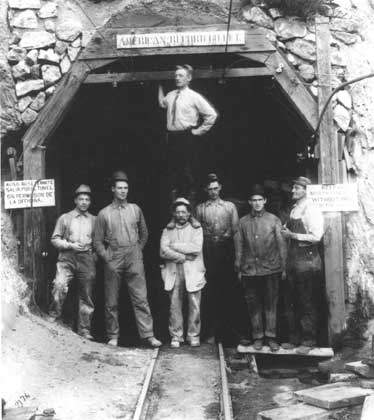
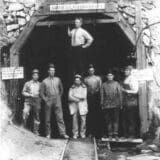
With all the hoopla about the centenary of the L.A. Aqueduct last week, I looked again at an article on a related piece of our history – the birth of public power. The early 20th Century was an age not entirely unlike our own, with high levels of inequality and most of the wealth controlled by a powerful few. It was in this climate that Los Angeles’ labor unions and working class communities fought for a publicly owned energy utility, to be sold at cost.
Jeff Stansbury argued in a 2011 L.A. Times opinion piece that while the reformers of the day are often credited for bringing public power to the city, they had actually allied themselves with L.A.’s three private electric companies, which wanted to control the power that would be generated by the aqueduct’s hydroelectric plants. Meanwhile, the Central Labor Council, the International Brotherhood of Electrical Workers and other unions pushed for a citywide straw poll in 1911 that would come down on the side of municipal power for homes and businesses.
» Read more about: The Birth of a Public Utility, the Future of a City »


At the National Employment Law Project (NELP), where we advocate for low-wage and unemployed workers, some of our most inspiring moments have come from being involved in campaigns where labor and the community work together for greater economic justice.
The recent passage of AB 218 — Assemblymember Roger Dickinson’s “ban the box” bill — was a shining example of the labor movement working in alliance with the community to expand economic opportunity to people hardest hit by unemployment. The unions, led by the California Labor Federation and SEIU Local 1000, were an essential partner to the powerful coalition that organized with NELP for more than two years to provide a second chance to the one in five Californians with a criminal record who struggle to find work. In addition to our partners that co-sponsored and led the charge organizing in support of the bill – PICO California,
» Read more about: New Law Eases Job Barriers for Former Prisoners »


On Sunday, November 3, the Los Angeles Times ran a 429-word story, “Wal-Mart kicks off Christmas way early, helping to kill Black Friday,” on the retail giant’s plan to entice customers to do their Christmas shopping early by marking down prices weeks before the traditional day-after-Thanksgiving bargains. Providing Walmart with tens of thousands of dollars of free advertising, the story reported that “Deals include 36 percent savings on a JVC 42-inch LED television and 51 percent savings on a 10-inch Xelio tablet — at $299 for the TV and $49 for the tablet, those are the lowest tags Wal-Mart has ever put on those products.” Surely this is the kind of “news” that a Walmart PR executive drools over.
In contrast, the Times’ coverage of last Thursday’s anti-Walmart protest — one of the largest local civil disobedience actions in the company’s history — garnered a puny 163-word story,
» Read more about: Missing in Action: L.A. Times Coverage of Walmart Arrests »


RICHMOND, Calif. – In a run-down shopping center in the heart of this San Francisco Bay Area community, about a half dozen activists are plotting to turn the housing market on its head.
Their aim: stem home mortgage foreclosures and preserve neighborhoods in a city hit hard by the housing bust. But, this time, the activists have some unusual allies.
They have enlisted officials from the city of Richmond and beyond. They’re working alongside a group of investors who stand to make a profit if the plan works. And they’re advocating government seizures.
Wait - seizing private property? Profiting from neighborhood preservation? Is this the Bizarro World? Well, sort of. But the way the activists see it, they’ve hit upon an idea that’s so counterintuitive, it just might work.
That idea involves eminent domain, the power of government to take private property for public purposes.
» Read more about: Richmond Considers Saving Troubled Mortgages »


In addition to serving as Senior Fellow for Health Care for the Roosevelt Institute | Campus Network, I am the Executive Director for my campus’ Roosevelt chapter. A few weeks ago at our general body meeting, I asked the crowd whether they had been talking with their friends about the Affordable Care Act and what these conversations sounded like. Did they know the basics: that in January, most Americans will be expected to either carry at least minimal insurance or pay an opt-out penalty? Do they know that they will be able to stay on their parents’ insurance until they are 26, if they so choose? Have they compared the prices of different options available for young adults versus the penalty?
The question meant to take up the first 10 minutes of our meeting turned into a full 40-minute discussion. As we scarfed down our pizza in true hungry college-student fashion,
» Read more about: Obamacare: Millenials Want Facts, Not Politics »
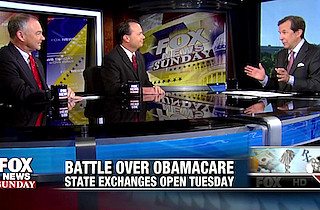
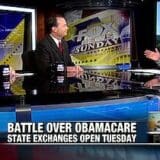
(Harold Pollack is the Helen Ross Professor of School of Social Service Administration at the University of Chicago. His post first appeared on The Nation‘s website and is republished with permission.) We’re six weeks into the implementation of one of the key provisions of the Affordable Care Act, the rollout of the healthcare marketplaces. It’s been a tough month, dominated by failures of rather astonishing proportions. But sooner or later, Healthcare.gov will work and Republican governors will grasp that bipartisan cooperation with the Obama administration is in their best interest. First, let’s acknowledge the failures. The most obvious occurred within the Obama administration itself, whose Department of Health and Human Services botched the launch of the online marketplace. For those of us who worked so hard over many years to secure passage of healthcare reform, this was humiliating. We argued for years that the individual and small-group insurance market required greater transparency,


How will the 2016 election be framed? What will be America’s choice?
If the coverage of last week’s two big winners offers a guide, the choice will be between “pragmatism” and “ideology.”
The Washington Post called Chris Christie’s huge gubernatorial victory a “clear signal in favor of pragmatic, as opposed to ideological, governance.”
But the mainstream media used a different adjective to describe Bill de Blasio, last week’s other landslide victor. The New York Times, for example, wrote of “the rise of the left-leaning Mr. de Blasio.”
Again and again, Christie is described as the pragmatist; De Blasio, the lefty.
But these appellations ignore what’s happening to an America in which almost all the economic gains are going to the richest 1 percent, median household incomes continues to drop and the number of Americans in poverty continues to rise.


“Thank you for your service.”
It’s a line we hear and say a lot around Veteran’s Day, especially in California, home to 1.8 million veterans, more than in any other state.
But if we really want to show gratitude for our veterans, then we need to do more than utter a simple “thank you.” We need to help these brave heroes find a middle-class life when they return from serving our country.
According to the Department of Veterans Affairs annual survey of veterans, jobs are the biggest concern for our returning veterans and for good reason — the unemployment rate for veterans of recent conflicts is an unacceptable 10 percent and 1.5 million young veterans – many with families to support — currently live under the poverty line.
It hasn’t always been like this. According to Nick Berardino, Vietnam Veteran and General Manager of the Orange County Employees Association:
“When we came back from Vietnam,
» Read more about: Labor Initiative to Help Struggling Veterans »


As every resident of the Southland must know by now, this month marks the centennial of the Los Angeles Aqueduct. When, in 1913, the valves were first turned and water rushed down the last hillside between the Eastern Sierra and the San Fernando Valley, William Mulholland, the brilliant self-taught engineer who guided the project, and whose career would end when the St. Francis Dam collapsed, famously said, “There it is. Take it.”
A small group of anonymous but rich men already had. And they will again, if they can.
A hundred years ago, these self-styled “civic leaders” cooked up a plan that began by stealing all the water that flowed down the Owens Valley on the eastern side of the Sierra Nevada. If you’ve seen Chinatown you know this plot. A faked water-shortage scare stampeded L.A. voters into supporting a bond measure that provided funds to purchase ranch and farm properties in the Owens Valley,


More than any other public policy issue, health care is very personal. So it is not surprising that personal stories are a central battleground for the public perception of the Affordable Care Act. And it is increasingly clear that this battle will be fought through the prisms of class and race.
The Affordable Care Act (ACA) would not have become law if it were not for the willingness of survivors of the nation’s health care mess – people who had lost loved ones, fought to get care after an insurance company denial, faced crippling medical costs – to tell their stories to members of Congress and the press. Many members of Congress voted for the bill, despite the political risk, because they were moved by personal encounters with constituents with compelling stories. Many of the most effective spokespeople during the legislative battle over the law were people whose lives and livelihoods had been threatened by our defective health coverage system.
» Read more about: Halloween’s Over But Media’s Obama-scare Stories Persist »


The motorcade of JFK commemorative TV programs began this week and will continue through the half-century anniversary on November 22. The 35th president’s reputation has run the arc from martyr to cultural piñata and, if JFK: A President Betrayed is any indication, is returning to sainthood.
Like just about anything open to historical interpretation, Kennedy’s thousand days in office and his assassination provide grist for the relentless, endless shouting matches that have replaced the American conversation about our national identity. In fact, I would say that the culture wars did not start with the Pill, the Beatles, Lenny Bruce, Timothy Leary or Mario Savio – they began the minute John F. Kennedy was pronounced dead.
There was some minor confirmation of this today in the online reaction to the review, by Los Angeles Times TV critic Robert Lloyd, of the National Geographic Channel’s Killing Kennedy,


I have been practicing the first two
lines of a poem by Chung Ling:
“I make fast my white barge
to the bank of the brimming stream.”
One of my students wrote it out for me
phonetically. I want to say these lines
to the old Chines guys I swim
with every afternoon at the Y.
I think they would enjoy it. I think
they would like me. Today there is
no one in the pool but us, and we
are all hanging onto the sides.
I point to the placid water and recite.
They are stunned, and then Mr. Chu
starts to weep. His friends help him
out. They disappear through the blue
door. Later there is a note on my locker,
written on a paper towel,


During NPR’s Morning Edition, broadcast on Southern California’s public radio station KCRW, you’ll hear an underwriter spot for “Labor Lawyers” Fisher & Phillips.
Turns out Fisher & Phillips represents employers and it’s not a benign management firm.
Here’s Fisher & Phillips describing on its website how it helped a manufacturing plant during a labor dispute with the Machinists union:
[O]ur firm provided advice to the company on how to weather the strike including the hiring of permanent replacements for the approximately 100 employees . . . Our attorneys also advised our client regarding the legal and practical issues involved in removing the union . . . As a result, today our client’s plant is union-free and more productive than before the strike.
A national firm, Fisher & Phillips’ L.A. partner Lonnie Giamela is referenced in the promo.